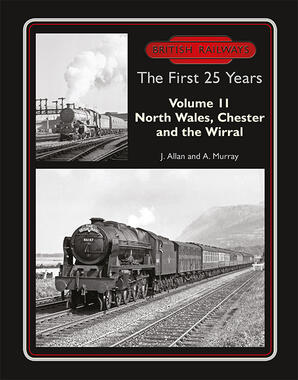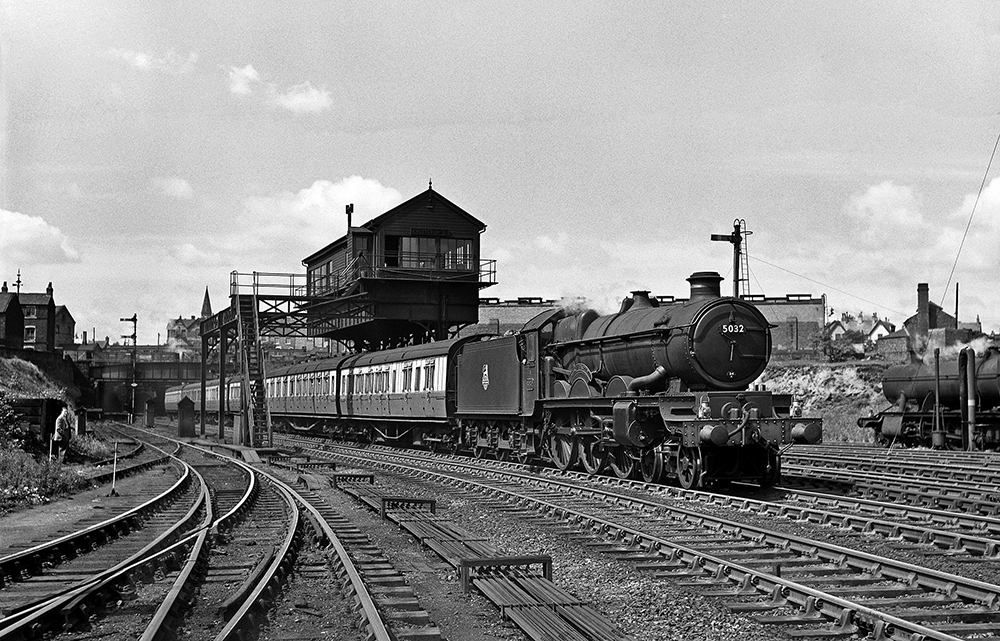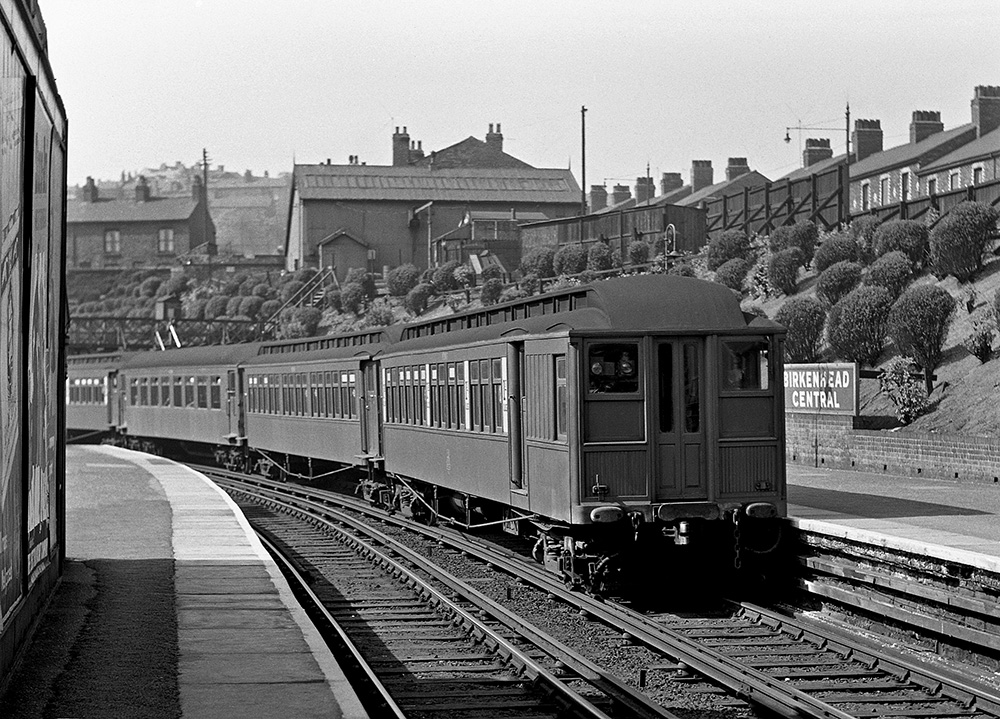British Railways The First 25 Years Volume 11: North Wales, Chester and the Wirral

British Railways The First 25 Years Volume 11: North Wales, Chester and the Wirral
J. Allan and A. Murray
208 pages. 275x215mm. Printed on gloss art paper, casebound with printed board covers.
ISBN13 : 9781911038856
£22.50
J. Allan and A. Murray
208 pages. 275x215mm. Printed on gloss art paper, casebound with printed board covers.
ISBN13 : 9781911038856
£22.50
The eleventh in a series of books depicting the First 25 years of British Railways covers the lines in North Wales, Chester and the Wirral peninsular. We start at Gobowen on the Great Western Railway main line from Shrewsbury going north via Wrexham to the outskirts of Chester then back to Wrexham to pick up the former Great Central Railway line to the Wirral, ending on the banks of the River Mersey at Seacombe after calling at Croes Newydd, Rhosddu and Bidston engine sheds. While on Merseyside we look at the Wirral electric units, the pioneering main line electrified suburban system. After visiting the docks and Mollington Street shed, we return south from Birkenhead to Chester, branching off to Helsby and Frodsham. At Chester we untangle the complex of lines into General station and contrast this with the GCR and Cheshire Lines Committee Northgate station, and then visit the City’s three engine sheds and also Mold Junction. After the bustle of Chester, the rural line to Denbigh provides a complete contrast before we revert to the L&NWR main line along the North Wales coast passing through the popular seaside resorts, taking a short detour down the Dyserth branch, before resuming our journey to Llandudno Junction. After visiting the engine shed we travel down the two branches which start at the Junction, the short line to Llandudno and the Conway Valley line to Blaenau Ffestiniog. Regaining the main line we pass through the iconic tubular bridge at Conway. From Bangor we go down to Caernarvon on the branch to Afon Wen. Then we cross Robert Stephenson’s second tubular bridge over into Anglesey and take a trip up the branch to Amlwch before reaching Holyhead. Summer Saturdays saw a vast amount of holiday traffic, transforming the operation of the North Wales main line. The motive power on the ex-GCR lines had remained virtually unchanged for half a century until the mid-1950s when LM&SR and BR Standard engines took over from the Great Central designs. Chester General saw almost every LM&SR class up to ‘Coronation’ Pacifics and GWR types. North Wales was at the forefront of the introduction of DMUs in 1956. Main line diesels replaced steam gradually from 1959 onwards, although steam did enjoy a brief resurgence on the former GWR route after it was transferred to the LMR. On the Wirral, the original electric units were replaced in the mid-1950s when British Railways built more of the 1930s LM&SR design already in use there.


British Railways The First 25 Years Volume 11: North Wales, Chester and the Wirral - Sample Images

‘Castle’ Class 4-6-0 No. 5032 Usk Castle with an express from Paddington when it was paired with a Hawksworth straight-sided tender between May 1952 and August 1953. No. 5032 was a Stafford Road engine from November 1951 until March 1958 when it went to Newton Abbot. It hauled the first British Railways train to leave Paddington on 1st January 1948, the 12.5am to Birkenhead which it would have taken as far as Chester. The first two coaches of the train are ex-GWR ‘Toplight’ stock dating from the first decade of the century and still in top link service fifty years later. The 80-lever frame No. 6 box opened in 1903 had to be mounted on a gantry because of space restrictions and to ensure the signalmen had a good view of the lines at the west end of the triangular Chester South Junction. In the left background are wagons on one of the Northgate sidings and immediately behind No. 5032 is the side of Northgate engine shed. J. D. Mills/Rail Archive Stephenson

The ex-Mersey Railway stock was gradually repainted from that company’s dark brown livery into BR multiple unit green, and the Coat of Arms was replaced by the BR emblem. A Mersey Railway unit arrives at Birkenhead Central from Rock Ferry on 15th May 1955. When it leaves the station, the train will immediately go into the Mersey Tunnel, 754 yards to Hamilton Square and then a further 1 mile and 1,430 yards of tunnel to Liverpool Central. The third vehicle without the clerestory roof is one of the steel bodied trailers built in 1936. The fourth rail on the former Mersey Railway lines was discontinued in 1955. ,I>J. F. Davies/Rail Archive Stephenson
